PRACTICE TIPS
 ACCENTS . Accent the first note of each group, then the second, the third, etc. Keep your hand loose on the accent.
ACCENTS . Accent the first note of each group, then the second, the third, etc. Keep your hand loose on the accent.
 ADD-A-CHORD. To master a series of chords, repeat the final chord until it feels comfortable. Next, play the last two chords back and forth until you can play them with ease. Do the same thing with the last three chords, then four, then five, etc., drilling each combination until it is smooth. Continue until you reach the first chord of the series, then play the whole row from beginning to end three times.
ADD-A-CHORD. To master a series of chords, repeat the final chord until it feels comfortable. Next, play the last two chords back and forth until you can play them with ease. Do the same thing with the last three chords, then four, then five, etc., drilling each combination until it is smooth. Continue until you reach the first chord of the series, then play the whole row from beginning to end three times.
 BABY STEPS. Play a passage once from each white key (C, D, E, etc., up to the next C). Use the same fingering each time. (This is good for short, tricky things, like white-key ornaments. If the passage contains both white and black keys, play it once in each octave of the piano.)
BABY STEPS. Play a passage once from each white key (C, D, E, etc., up to the next C). Use the same fingering each time. (This is good for short, tricky things, like white-key ornaments. If the passage contains both white and black keys, play it once in each octave of the piano.)
 BACK UP. Instead of working from the beginning of a section to the end, start at the end and work back to the beginningphrase by phrase, measure by measure, or even note-group by note-group.
BACK UP. Instead of working from the beginning of a section to the end, start at the end and work back to the beginningphrase by phrase, measure by measure, or even note-group by note-group.
 BACKPEDAL. After you feel comfortable pedaling a piece or a section of a piece, play it without pedal at least once every practice session, to make sure you are still playing legato.
BACKPEDAL. After you feel comfortable pedaling a piece or a section of a piece, play it without pedal at least once every practice session, to make sure you are still playing legato.
 BUTTON UP. Make a game out of repetitions by arranging six to twelve buttons (or pennies or other objects) in a row. Each time you play the phrase or section perfectly, move one button into a new row. Repeat until all buttons are in the new row.
BUTTON UP. Make a game out of repetitions by arranging six to twelve buttons (or pennies or other objects) in a row. Each time you play the phrase or section perfectly, move one button into a new row. Repeat until all buttons are in the new row.
 CHECK YOUR PULSE. Ask someone to stop you at six different spots as you play your piece. Each time you are stopped, say the count of the measure you are on.
CHECK YOUR PULSE. Ask someone to stop you at six different spots as you play your piece. Each time you are stopped, say the count of the measure you are on.
 COMBINATIONS. Hands together, play staccato and piano in one hand, legato and forte in the other. Reverse.
COMBINATIONS. Hands together, play staccato and piano in one hand, legato and forte in the other. Reverse.
 CONNECTIONS. Draw a vertical line connecting each pair of right- and left-hand notes to make clear which notes go together.
CONNECTIONS. Draw a vertical line connecting each pair of right- and left-hand notes to make clear which notes go together.
 COPYCAT. If your music contains fingering in a certain section, copy that fingering into every repeat of the section.
COPYCAT. If your music contains fingering in a certain section, copy that fingering into every repeat of the section.
 COUNTDOWN. Draw a vertical line separating two parts that are hard to connect smoothly. Play up to the line, relax your hands, and float into the second part while counting up to 5. Finish the phrase. Repeat, but this time count to 4. The next time count to 3, then 2, then 1. Then play three times without stopping.
COUNTDOWN. Draw a vertical line separating two parts that are hard to connect smoothly. Play up to the line, relax your hands, and float into the second part while counting up to 5. Finish the phrase. Repeat, but this time count to 4. The next time count to 3, then 2, then 1. Then play three times without stopping.
 COUNTDOWN CHORDS. Use this for a long series of chords. To smooth the way from one chord to the next, play the chords one by one, first four times each, then three times, then two times, and finally one time each, as written.
COUNTDOWN CHORDS. Use this for a long series of chords. To smooth the way from one chord to the next, play the chords one by one, first four times each, then three times, then two times, and finally one time each, as written.
 EXPRESS YOURSELF. For each dynamic marking in your piece, play two measures before it and two measures after it. Listen and evaluate your dynamics. Repeat two times.
EXPRESS YOURSELF. For each dynamic marking in your piece, play two measures before it and two measures after it. Listen and evaluate your dynamics. Repeat two times.
 FILL IN THE BLANKS. In a section or an entire piece, play only the notes which fall on the downbeats. Play again, this time adding the notes which fall on the second most important beat of each measure. Continue this routine until all beats (and notes) have been restored.
FILL IN THE BLANKS. In a section or an entire piece, play only the notes which fall on the downbeats. Play again, this time adding the notes which fall on the second most important beat of each measure. Continue this routine until all beats (and notes) have been restored.
 FINAL FOUR. In a section of continuous fast notes, play the last four notes of each measure staccato, or louder than the rest of the measure, or with a crescendo into the next measure.
FINAL FOUR. In a section of continuous fast notes, play the last four notes of each measure staccato, or louder than the rest of the measure, or with a crescendo into the next measure.
 FIRST STEPS. Use these steps the first time you practice a piece, to make sure you dont miss anything. Choose a speed that allows you to play perfectly, even on the first try. Take small bites: work on one small section at a time, one hand at a time.
FIRST STEPS. Use these steps the first time you practice a piece, to make sure you dont miss anything. Choose a speed that allows you to play perfectly, even on the first try. Take small bites: work on one small section at a time, one hand at a time.
- Tap or clap the rhythm, counting aloud. Play the phrase HS while singing the count.
- Play again while singing the note names.
- Play a third time while singing the finger numbers.
- Play one more time while listening to the dynamics.
When you are able to put hands together, repeat #1, tapping RH notes with the RH and LH notes with the LH before yo play. Then do #4 HT.
 FOOTWORK. Use different hand/foot combinations when adding pedal. Play the passage twice with each combination:
FOOTWORK. Use different hand/foot combinations when adding pedal. Play the passage twice with each combination:
- LH + pedal
- RH + pedal
- HT + pedal
 GET TOGETHER. Do tip 23 (Keep Track), hands separately. When each hand is as fast as it can go, take the left hands highest score, cut it in half, and try the passage hands together at that speed. If you play it perfectly, do Keep Track hands together. If not, lower the speed and try again.
GET TOGETHER. Do tip 23 (Keep Track), hands separately. When each hand is as fast as it can go, take the left hands highest score, cut it in half, and try the passage hands together at that speed. If you play it perfectly, do Keep Track hands together. If not, lower the speed and try again.
 GHOSTS. Play the melody with a singing tone at the same time as you pretend-play the accompaniment like a ghostsilently. When you can do this easily, add a little bit of sound (still pianissimo ) to the accompaniment and play that with the singing melody. Listen carefully: the melody should be at least one dynamic level louder than the accompaniment.
GHOSTS. Play the melody with a singing tone at the same time as you pretend-play the accompaniment like a ghostsilently. When you can do this easily, add a little bit of sound (still pianissimo ) to the accompaniment and play that with the singing melody. Listen carefully: the melody should be at least one dynamic level louder than the accompaniment.
 GIANT STEPS. Play the passage once in each octave of the piano.
GIANT STEPS. Play the passage once in each octave of the piano.
 HANDFULS. Divide a passage into groups of notes that can be played without changing your hand position. Play each group as a solid chord or cluster. Then play as written.
HANDFULS. Divide a passage into groups of notes that can be played without changing your hand position. Play each group as a solid chord or cluster. Then play as written.
Beethoven (Op. 53)


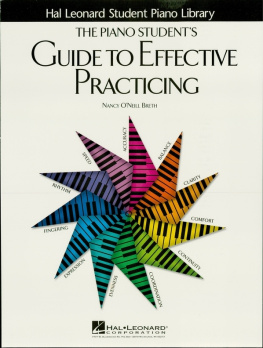
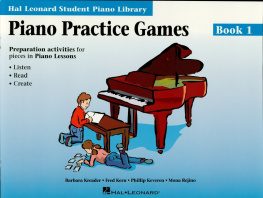

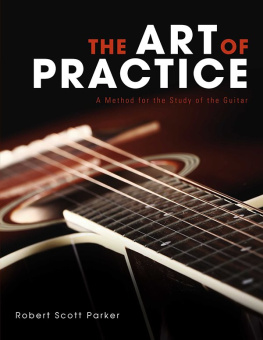
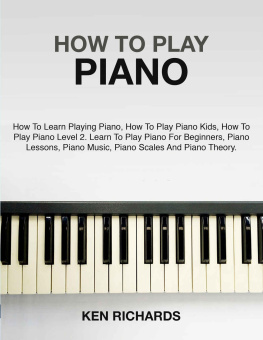
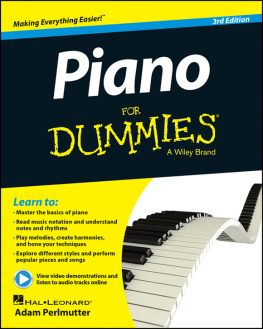
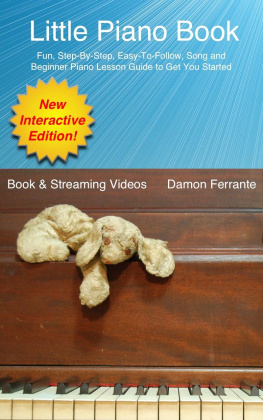

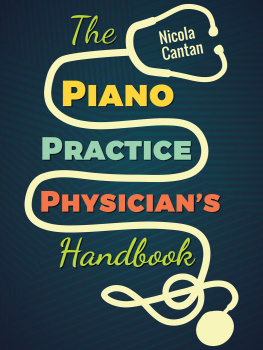


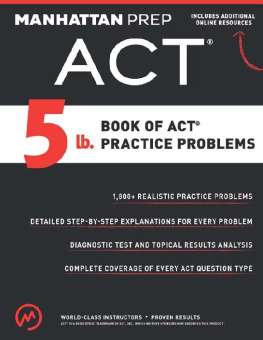

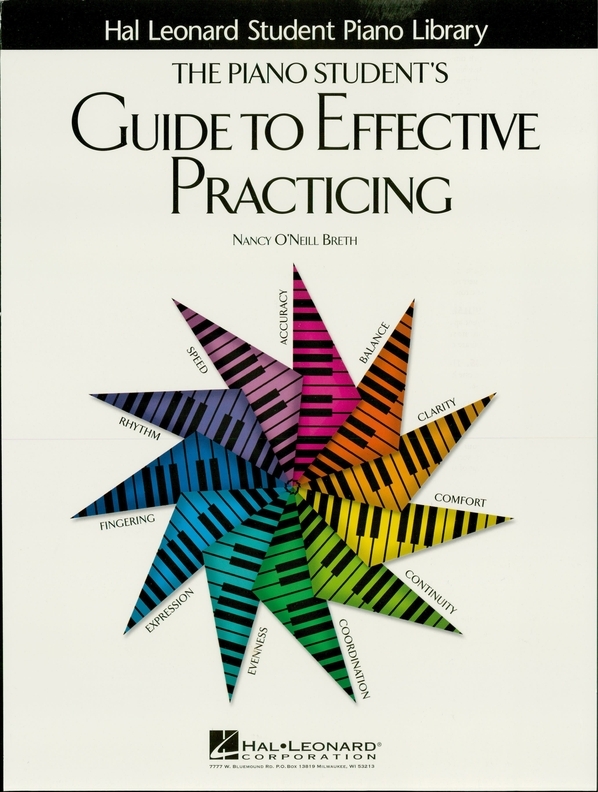
 ACCENTS . Accent the first note of each group, then the second, the third, etc. Keep your hand loose on the accent.
ACCENTS . Accent the first note of each group, then the second, the third, etc. Keep your hand loose on the accent.
 ADD-A-CHORD. To master a series of chords, repeat the final chord until it feels comfortable. Next, play the last two chords back and forth until you can play them with ease. Do the same thing with the last three chords, then four, then five, etc., drilling each combination until it is smooth. Continue until you reach the first chord of the series, then play the whole row from beginning to end three times.
ADD-A-CHORD. To master a series of chords, repeat the final chord until it feels comfortable. Next, play the last two chords back and forth until you can play them with ease. Do the same thing with the last three chords, then four, then five, etc., drilling each combination until it is smooth. Continue until you reach the first chord of the series, then play the whole row from beginning to end three times. BABY STEPS. Play a passage once from each white key (C, D, E, etc., up to the next C). Use the same fingering each time. (This is good for short, tricky things, like white-key ornaments. If the passage contains both white and black keys, play it once in each octave of the piano.)
BABY STEPS. Play a passage once from each white key (C, D, E, etc., up to the next C). Use the same fingering each time. (This is good for short, tricky things, like white-key ornaments. If the passage contains both white and black keys, play it once in each octave of the piano.) BACK UP. Instead of working from the beginning of a section to the end, start at the end and work back to the beginningphrase by phrase, measure by measure, or even note-group by note-group.
BACK UP. Instead of working from the beginning of a section to the end, start at the end and work back to the beginningphrase by phrase, measure by measure, or even note-group by note-group. BACKPEDAL. After you feel comfortable pedaling a piece or a section of a piece, play it without pedal at least once every practice session, to make sure you are still playing legato.
BACKPEDAL. After you feel comfortable pedaling a piece or a section of a piece, play it without pedal at least once every practice session, to make sure you are still playing legato. BUTTON UP. Make a game out of repetitions by arranging six to twelve buttons (or pennies or other objects) in a row. Each time you play the phrase or section perfectly, move one button into a new row. Repeat until all buttons are in the new row.
BUTTON UP. Make a game out of repetitions by arranging six to twelve buttons (or pennies or other objects) in a row. Each time you play the phrase or section perfectly, move one button into a new row. Repeat until all buttons are in the new row. CHECK YOUR PULSE. Ask someone to stop you at six different spots as you play your piece. Each time you are stopped, say the count of the measure you are on.
CHECK YOUR PULSE. Ask someone to stop you at six different spots as you play your piece. Each time you are stopped, say the count of the measure you are on. COMBINATIONS. Hands together, play staccato and piano in one hand, legato and forte in the other. Reverse.
COMBINATIONS. Hands together, play staccato and piano in one hand, legato and forte in the other. Reverse. CONNECTIONS. Draw a vertical line connecting each pair of right- and left-hand notes to make clear which notes go together.
CONNECTIONS. Draw a vertical line connecting each pair of right- and left-hand notes to make clear which notes go together. COPYCAT. If your music contains fingering in a certain section, copy that fingering into every repeat of the section.
COPYCAT. If your music contains fingering in a certain section, copy that fingering into every repeat of the section. COUNTDOWN. Draw a vertical line separating two parts that are hard to connect smoothly. Play up to the line, relax your hands, and float into the second part while counting up to 5. Finish the phrase. Repeat, but this time count to 4. The next time count to 3, then 2, then 1. Then play three times without stopping.
COUNTDOWN. Draw a vertical line separating two parts that are hard to connect smoothly. Play up to the line, relax your hands, and float into the second part while counting up to 5. Finish the phrase. Repeat, but this time count to 4. The next time count to 3, then 2, then 1. Then play three times without stopping. COUNTDOWN CHORDS. Use this for a long series of chords. To smooth the way from one chord to the next, play the chords one by one, first four times each, then three times, then two times, and finally one time each, as written.
COUNTDOWN CHORDS. Use this for a long series of chords. To smooth the way from one chord to the next, play the chords one by one, first four times each, then three times, then two times, and finally one time each, as written. EXPRESS YOURSELF. For each dynamic marking in your piece, play two measures before it and two measures after it. Listen and evaluate your dynamics. Repeat two times.
EXPRESS YOURSELF. For each dynamic marking in your piece, play two measures before it and two measures after it. Listen and evaluate your dynamics. Repeat two times. FILL IN THE BLANKS. In a section or an entire piece, play only the notes which fall on the downbeats. Play again, this time adding the notes which fall on the second most important beat of each measure. Continue this routine until all beats (and notes) have been restored.
FILL IN THE BLANKS. In a section or an entire piece, play only the notes which fall on the downbeats. Play again, this time adding the notes which fall on the second most important beat of each measure. Continue this routine until all beats (and notes) have been restored. FINAL FOUR. In a section of continuous fast notes, play the last four notes of each measure staccato, or louder than the rest of the measure, or with a crescendo into the next measure.
FINAL FOUR. In a section of continuous fast notes, play the last four notes of each measure staccato, or louder than the rest of the measure, or with a crescendo into the next measure. FIRST STEPS. Use these steps the first time you practice a piece, to make sure you dont miss anything. Choose a speed that allows you to play perfectly, even on the first try. Take small bites: work on one small section at a time, one hand at a time.
FIRST STEPS. Use these steps the first time you practice a piece, to make sure you dont miss anything. Choose a speed that allows you to play perfectly, even on the first try. Take small bites: work on one small section at a time, one hand at a time. FOOTWORK. Use different hand/foot combinations when adding pedal. Play the passage twice with each combination:
FOOTWORK. Use different hand/foot combinations when adding pedal. Play the passage twice with each combination: GET TOGETHER. Do tip 23 (Keep Track), hands separately. When each hand is as fast as it can go, take the left hands highest score, cut it in half, and try the passage hands together at that speed. If you play it perfectly, do Keep Track hands together. If not, lower the speed and try again.
GET TOGETHER. Do tip 23 (Keep Track), hands separately. When each hand is as fast as it can go, take the left hands highest score, cut it in half, and try the passage hands together at that speed. If you play it perfectly, do Keep Track hands together. If not, lower the speed and try again. GHOSTS. Play the melody with a singing tone at the same time as you pretend-play the accompaniment like a ghostsilently. When you can do this easily, add a little bit of sound (still pianissimo ) to the accompaniment and play that with the singing melody. Listen carefully: the melody should be at least one dynamic level louder than the accompaniment.
GHOSTS. Play the melody with a singing tone at the same time as you pretend-play the accompaniment like a ghostsilently. When you can do this easily, add a little bit of sound (still pianissimo ) to the accompaniment and play that with the singing melody. Listen carefully: the melody should be at least one dynamic level louder than the accompaniment. GIANT STEPS. Play the passage once in each octave of the piano.
GIANT STEPS. Play the passage once in each octave of the piano. HANDFULS. Divide a passage into groups of notes that can be played without changing your hand position. Play each group as a solid chord or cluster. Then play as written.
HANDFULS. Divide a passage into groups of notes that can be played without changing your hand position. Play each group as a solid chord or cluster. Then play as written.
